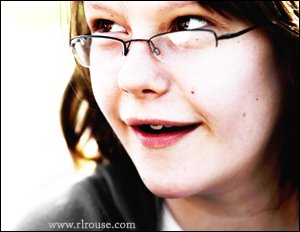 When I was a youngster I began playing Little League baseball, and during my first year I became quite a good hitter compared to most of the other kids on my team. But when the next spring rolled around and we began practicing for the new season I had all kinds of trouble hitting the ball.
When I was a youngster I began playing Little League baseball, and during my first year I became quite a good hitter compared to most of the other kids on my team. But when the next spring rolled around and we began practicing for the new season I had all kinds of trouble hitting the ball.
My coach realized that something was wrong while watching me take batting practice one day. He noticed that my swing and follow-through were as good as ever, but I was squinting terribly in an effort to see the ball. After practice he told my dad what he had witnessed, and after a trip to the optometrist and a new pair of glasses I began hitting like my old self again.
Although I didn’t immediately put the two symptoms together, looking back on it now I remember also having difficulty seeing the blackboard in my classes at the elementary school that year. I’m sure there were other clues as well that I and the people around me failed to pick up on, but that’s the way it is with kids.
If you have children of your own, it might pay to look for clues that his/her vision might not be the best. Here are a few things to pay attention to:
– Does your child squint when playing games even though most of the other kids don’t?
– Does he/she complain about the blackboard at school being fuzzy or out of focus?
– Does your child struggle in school even though he/she is obviously bright and really tries hard to succeed?
– Are the eyes often red or does he/she often rub them for no apparent reason?
If you notice any of these symptoms of poor eyesight in your child, you should make an appointment with an optometrist right away. Sight is arguably the most precious of all the senses, and the longer it takes to get vision problems corrected the worse they tend to get.
About the author: Rick Rouse is the owner of RLROUSE.COM. He has also worn glasses since he was just 9 years old.